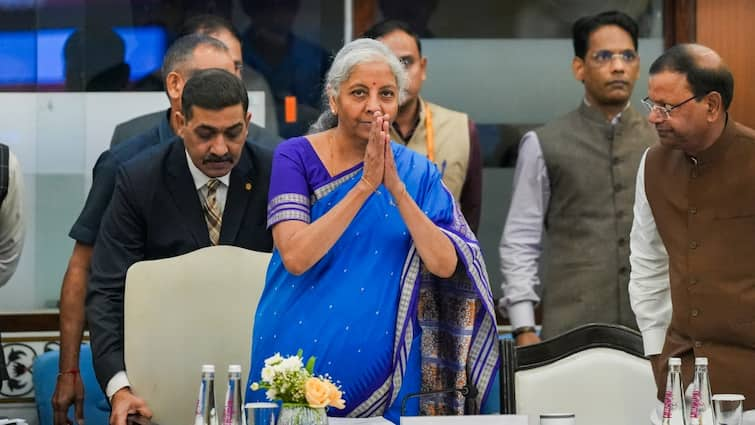The Goods and Services Tax (GST) Council, at its 56th meeting chaired by Union Finance Minister Nirmala Sitharaman, has approved a dual tax structure of 5 per cent and 18 per cent, replacing the existing four-rate system. The new regime, which removes the 12 per cent and 18 per cent slabs, will come into effect from September 22, as per sources cited by news agency ANI.
According to West Bengal Finance Minister, the rationalisation will lead to an overall revenue loss of ₹47,700 crore. The meeting, which began on September 3 and concludes on September 4, deliberated on easing compliance and lowering taxes on essential goods to stimulate consumption amid global trade headwinds.
News agency PTI reported that the Council discussed reducing GST on insurance premiums, rationalising footwear and apparel duties, and streamlining compliance with faster refund timelines. A special 40 per cent rate for luxury items such as high-end cars, tobacco and cigarettes also remains under consideration.
Items Set to Get Cheaper
Daily-use goods such as butter, ghee, jam, dry fruits, biscuits, pastry, ice cream, namkeen, bottled water, fruit juices and beverages containing milk are expected to shift to the lower 5 per cent slab from the current 18 per cent. Similarly, footwear and apparel priced up to ₹2,500 will now attract 5 per cent GST, up from the earlier ₹1,000 threshold.
Consumer goods including feeding bottles, kitchenware, bicycles, umbrellas and bamboo furniture may also see reduced tax rates. In addition, items like toothpaste, shampoo, soap and hair oil could drop from 18 per cent to 5 per cent. Cement, meanwhile, is set to become cheaper with GST lowered from 28 per cent to 18 per cent.
On the other hand, garments and footwear above ₹2,500 will now attract 18 per cent GST, while high-end automobiles, motorcycles above 350 cc, yachts and private aircraft are under discussion for the steep 40 per cent slab.
States Voice Concerns Over Losses
While the Centre projects that GST reforms could boost growth by up to 0.5 percentage points in the medium term, several opposition-ruled states have flagged concerns over revenue erosion. Ahead of the Council meet, ministers from Himachal Pradesh, Jharkhand, Karnataka, Kerala, Punjab, Tamil Nadu, Telangana and West Bengal convened separately to push for a compensation framework.
Himachal Pradesh Minister Rajesh Dharmani told news agency ANI, “Unanimously, everyone has agreed in favour of GST rate rationalisation. Now there will be three slabs. Effectively, it will be 5% and 18% percent. 12% and 28% have been abolished. There will be 40% on luxury goods.”
Jharkhand Finance Minister Radhakrishna Kishore said his state could lose ₹2,000 crore annually under the revised structure. “If the Centre agrees to compensate us for whatever loss we would incur, then we have no issues in approving the agenda before the Council. I don’t think the issue will come up for voting, as in a federal structure, it is the responsibility of the Centre to compensate states for revenue loss,” Kishore told reporters.
In a press statement, he further said, “Jharkhand is a manufacturing state. The Goods and Services Tax (GST) system has adversely affected the state’s internal revenue collection.” He noted that between 2017 and 2024-25, the state has already lost ₹16,408 crore in revenue, with the figure expected to rise to nearly ₹61,670 crore by 2029.
Kishore emphasised that “around 75 to 80 per cent of coal and steel production from Jharkhand is consumed outside the state. Thus, the benefits of GST are accruing to consumer states.” He urged the Centre to provide a guaranteed minimum of ₹2,000 crore annually until Jharkhand’s revenue stabilises.



